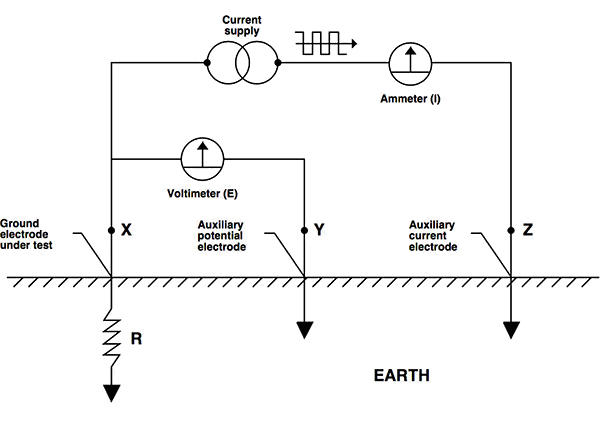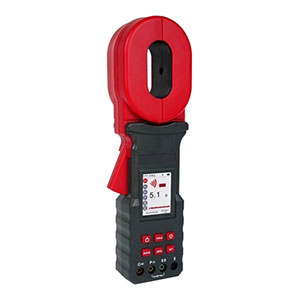What is an Earth Resistance Tester?
The earth resistance tester is a commonly used device in sectors such as electricity, postal services, railways, communications, and mining for measuring ground resistance. It discards the traditional manual hand-cranked power generation method and employs advanced large-scale integrated circuits. It applies DC/AC conversion technology to merge the three-terminal and four-terminal measurement methods into one. This instrument is known for its simplicity of operation, precise measurements, and high-precision electrical testing capabilities. In this article, ATO industrial automation will briefly introduce earth resistance tester to you, including its working principle, usage method, advantages, applications etc., to help you have a better understanding of it.
Basic Principles of the Earth Resistance Tester
The earth resistance tester operates based on the relationship between voltage, current, and resistance. It utilizes the four-wire measurement principle, simultaneously applying four test electrodes during the testing process. By applying a specific voltage source and measuring the current passing through the grounding system using a current meter, the tester calculates the value of the ground resistance. According to Ohm's Law, the ratio of current to voltage equals the ground resistance value.
Usage of the Earth Resistance Tester
- Pre-Test Preparation:
Before conducting the earth resistance test, certain preparations are necessary. Start by checking if the tester's power supply is functioning properly and if the test leads are correctly connected. Additionally, inspect the grounding system to ensure it meets testing requirements, such as verifying if other electrical devices are connected to the grounding system or checking for the presence of excessive moisture or corrosive substances. - Testing Steps:
- Connect the test leads of the tester to the grounding system.
- Power on the tester, select the testing mode, and set the testing range.
- Press the test button; the tester will automatically inject a specific current into the grounding system.
- The tester will automatically measure the voltage in the grounding system and calculate the ground resistance size based on Ohm's Law.
- After completing the test, remove the test leads of the tester from the grounding system, and turn off the tester's power.
- Testing Precautions:
- Ensure that the test leads of the tester are correctly connected to the grounding system to guarantee accurate and reliable test results.
- During testing, choose the appropriate testing mode and range to ensure the accuracy of the test results.
- Exercise caution during testing to avoid hazardous situations such as electrical shocks.
- Upon completing the test, promptly disconnect the test leads of the tester from the grounding system and turn off the tester's power.
Advantages of Earth Resistance Tester
- Accurate and Reliable Test Results:
The tester provides accurate and reliable test results, effectively assessing the quality and safety performance of grounding systems. - Simple Operation of the Instrument:
The operation of the testing instrument is straightforward, user-friendly, and does not require specialized skills. - Compact Size:
The instrument has a small size, making it convenient to carry and use. - Affordable Price:
The price of the instrument is relatively low, making it suitable for enterprises and organizations of various scales.
Applications of the Earth Resistance Tester
The earth resistance tester finds widespread application in the grounding system testing of various electrical equipment, including power systems, communication systems, and buildings. In power systems, the tester can be used to assess the grounding systems of substations, distribution rooms, and generator units. In communication systems, it is employed to test the grounding systems of communication towers, antennas, and other equipment. In buildings, the earth resistance tester ensures the safety performance of the building's grounding system.
The earth resistance tester is a crucial electrical testing instrument used to guarantee the safe and reliable operation of various electrical equipment. When using the earth resistance tester, attention should be given to pre-testing preparations, the selection of appropriate testing modes and ranges, and safety considerations during the testing process. With advantages such as accurate and reliable test results, simplicity of operation, compact size, and affordability, the earth resistance tester is suitable for enterprises and organizations of various scales.

